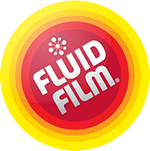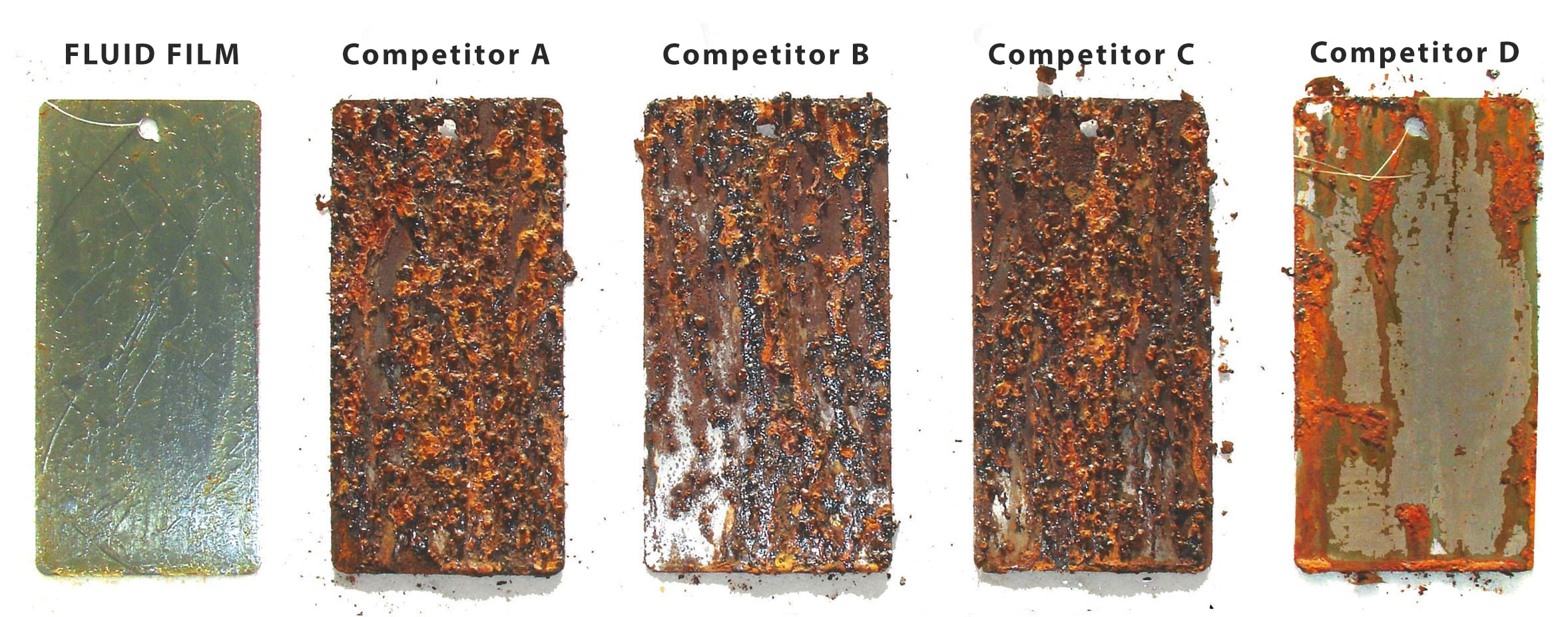Objective: to compare the corrosion protection effectiveness of Fluid Film to four leading competitive products.
Test: Using recognised methodology ASTM B117, each product was sprayed onto five, 8x16cm bare steel panels. The panels were then suspended vertically for 24 hours to stimulate end use conditions.
Tested to ASTM B117 (American Society for Testing and Materials – Salt Fog Test).
After 24 hours, ALL products – except Fluid Film – had sagged towards the bottom edge of the panels, resulting in increased film thickness at the bottom and less thickness above.
All panels were then suspended within a closed salt-spray accelerated corrosion chamber. Two products reached 95% corrosion within 14 days and a third after 45 days. After 28 days Fluid Film had reached a corrosion percentage of only 1%, and only 5% after 52 days.
Fluid Film outperformed it’s the test competitors by a huge margin. The comparison images below clearly demonstrate Fluid Films’ long-term corrosion control economy.
In addition, the surface adherence of its lanolin-based formula is self-healing in cases of scoring or similar damage and it remains soft and flexible, does not wash away or crack.
While most products of its kind contain between 70 and 90 per cent solvent, Fluid Film contain none, except for the propellant in its aerosol cans. This means that only 10 to 30 per cent of competing products have usable corrosion control materials. The rest evaporates, contaminating the atmosphere and is useless to the user.

